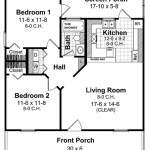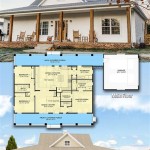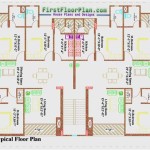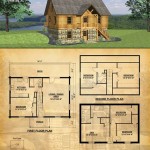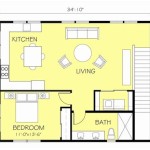How to Create a House Building Plan
Creating a house building plan is a crucial step in the construction process. It serves as a blueprint for your home, outlining every detail from the layout to the materials. A well-crafted plan ensures that your home meets your needs, is structurally sound, and adheres to building codes.
Whether you're working with an architect or designing the plan yourself, understanding the process and key elements is essential. This article will guide you through the steps involved in creating a comprehensive house building plan.
1. Determine Your Needs
Start by defining your space requirements, number of rooms, desired layout, and architectural style. Consider your family size, lifestyle, and future needs. Think about the type of kitchen you want, the number of bathrooms you need, and the size of the living areas.
2. Site Analysis
Thoroughly assess the building site, considering its topography, soil conditions, access to utilities, and any existing structures or vegetation. The site analysis will inform the design of your home and ensure that it complements the surroundings.
3. Floor Plan Design
Create a detailed floor plan that shows the layout of the rooms, walls, doors, and windows. Pay attention to the flow of traffic and the relationships between spaces. The floor plan should be drawn to scale, with dimensions clearly marked.
4. Exterior Design
The exterior design encompasses the overall appearance, materials, and style of your home. Choose materials that suit your climate and aesthetic preferences, and ensure that the design is compatible with the neighborhood's architecture.
5. Structural Design
The structural design determines the integrity and stability of your home. It involves selecting the appropriate foundation, framing system, and materials for the walls, roof, and floors. The structural design must meet building codes and withstand the loads imposed by the structure and occupants.
6. Mechanical, Electrical, and Plumbing Systems
These systems ensure the functionality and comfort of your home. The mechanical plan includes heating, ventilation, and air conditioning systems, while the electrical plan covers lighting, outlets, switches, and wiring. The plumbing plan outlines the water supply, drainage, and waste disposal systems.
7. Specifications and Details
The specifications and details provide additional information about the materials, fixtures, and finishes to be used throughout the home. They include the type of paint, flooring, countertops, appliances, and hardware.
8. Revisions and Approval
Once you have a draft plan, review it carefully and make any necessary revisions. If you're working with an architect, they will submit the plan for approval by the local building department. Approval ensures that the plan meets building codes and zoning requirements.
9. Construction Documents
The final step is to create detailed construction documents that provide clear instructions for the builders. These documents include the floor plans, elevations, sections, and details.
Conclusion
Creating a house building plan is a complex but essential undertaking. By following the steps outlined above and working with a qualified architect or designer, you can develop a plan that meets your needs, reflects your style, and ensures a successful construction process.

Floor Plans Learn How To Design And Plan

Design Your Own House Floor Plans Roomsketcher

Design Your Own House Floor Plans Roomsketcher

Design Your Own House Floor Plans Roomsketcher

Design Your Own House Floor Plans Roomsketcher

Create A Floor Plan Of Your House Instructables

Design Your Own House Floor Plans Roomsketcher

Design Your Own House Floor Plans Roomsketcher
Est House Plans To Build Simple With Style Blog Eplans Com

Est House Plans To Build Simple With Style Blog Eplans Com



